Balancing Principle and Pragmatism
Balancing Principle and Pragmatism
By Mehmet Enes Beşer
Myanmar’s foreign policy, as with so much of its post-colonial foreign relations, exists in the periphery of paradox: bound by core dicta of non-alignment, sovereignty, and non-interference and dictated more and more by necessity, isolation, and flexible allegiances. Following the February 2021 military coup, when the democratically elected Aung San Suu Kyi administration was ousted and the army took control under the State Administration Council (SAC), Myanmar found itself in a vastly different diplomatic scenario. International condemnation, regional mistrust, and civilian dissent imposed its foreign relations under novel pressures. Myanmar’s foreign policy, in these circumstances, is a nuanced bargaining: one of principle and pragmatism, autonomy and reliance, and legitimacy and necessity.
Myanmar’s foreign policy has long been guided by a succession of recurring paradigms. One of the longest of these was a desire for sovereignty and inviolability of national independence. Born of its military heritage and colonial past, the principle guided its cautious acceptance of international institutions and resistance to foreign coercion. Whether it was the Ne Win junta, the SPDC military junta, or even the quasi-civilian NLD government, Myanmar always had a desire to become and remain independent of foreign domination, especially in affairs it regards as internal.
This principle has directed its traditional non-alignment policy. In a Southeast Asian neighborhood of Cold War-era aligning neighbors, Myanmar defied alliances and crafted its diplomatic position in a self-consciously ambiguous form. It entered ASEAN as a late and reluctant member in 1997, showing ASEAN doctrine on non-interference by avoiding integration pressures as well. This doctrine of independence has manifested itself in the past in the form of strategic distance—Myanmar has opted for arms-length relations as opposed to close entanglements, and has opted to balance the great global powers instead of aligning with them.
Principles, however, do not dictate a country’s foreign policy. Myanmar’s post-coup development path demonstrated the extent to which survival-driven pragmatism informs its foreign decisions. Cut off to a large extent from the West, under sanctions from the United States, the European Union, and even Australia, the SAC turned heavily to its available networks to keep the regime stability afloat. Foremost of these was its strategic alignment with China. Beijing provided diplomatic shielding and business engagement, both justifying the junta in international forums like the UN Security Council and keeping high-profile infrastructure projects under the Belt and Road Initiative afloat. In turn, China gets its longstanding access to Myanmar’s seaports, natural resources, and buffering presence along its border.
Myanmar’s embrace of China is neither unambivalent nor uncalculated, however. Historically wary of Beijing’s intentions—especially with regard to the sponsorship of border insurgency by ethnic minorities—the junta has also courted Russia, India, and other regional players such as Thailand and Vietnam in an effort to diversify dependencies. Russia, in particular, has emerged as a principal supplier of military weaponry and one of the lone international voices advocating the legitimacy of the SAC’s role globally. This hedging behavior attests to Myanmar’s diplomatic proclivity for hedging—calibrating multiple relationships in order to prevent over-reliance upon any one player.
For ASEAN, the Myanmar position is a source of self-crisis. The bloc’s initial commitment to the creed of consensus and non-interference has collided with growing pressure to act against the violence of the junta. ASEAN’s Five-Point Consensus of 2021 has been continuously violated by the SAC, leading the bloc to downgrade Myanmar’s participation in the summits and increase engagement with the National Unity Government (NUG), the opposition coalition of deposed parliamentarians and civil society figures. This collapse of consensus is a tectonic shift in ASEAN diplomacy—and leaves Myanmar increasingly isolated, even by neighbors who have long been committed to backchannel engagement.
Meanwhile, the SAC foreign policy is likewise susceptible to both internal and external legitimacy crises. The junta’s pretence to represent Myanmar abroad is called into question by the NUG, which, while not a formal state actor, has made impressive gains in foreign diplomatic efforts. Western countries and international institutions have begun informal contacts with the NUG, and the broader civil society and opposition movement are employing digital diplomacy to galvanize global public opinion. This further complicates Myanmar’s foreign relations—that foreign capitals no longer simply have to decide how to engage with Myanmar, but whom.
What we have, therefore, is a foreign policy in severe constraint. It is not a visionary foreign policy, but reactive, sanction-bound, resented by the neighbors, and lacking legitimacy underpinning good diplomacy. It is the SAC’s involvement which is better described in terms of the maintenance of the regime than by any grand strategy: getting weapons, capital, and approbation wherever it can be had. Non-alignment and sovereignty are on the official rhetoric, but selectively applied, and all too frequently as a means of forestalling criticism rather than of defining significant engagement.
Conclusion
Myanmar’s foreign policymaking in the modern era is a product of its past and a reflection of its current state—an artifact of its continued struggle to reconcile survival and ideology. Although the rhetoric of sovereignty, non-alignment, and pride in civilization is maintained, the reality is one of strategic dependence and declining legitimacy. The junta clings to the politesse of diplomatic normalcy while increasingly becoming isolated, selectively invoking the past in its struggle in an increasingly unforgiving international system. But this is not the last chapter in Myanmar’s foreign policy story. In its current unraveling lie also the seeds of its potential rebirth. If political change becomes real—and it could come through negotiation, opposition, or foreign pressure—a much more coherent and credible foreign policy can be crafted, one not motivated by the imperatives of military survival but by the interests of a plural and democratic society. Such a turn of events would enable Myanmar to recover its foreign affairs, recover its seat in ASEAN, and once again address its international partners not as a pariah, but as a friend. For the time being at least, though, the chasm between Myanmar’s foreign policy idealism and its practice demonstrates the predicament of exercising diplomacy without legitimacy. As long as that chasm continues, Myanmar’s status in the international system will remain suspended between limbo—neither isolated, nor integrated; neither principled, nor pragmatic. It is a balancing act on which the stakes mount by the day.




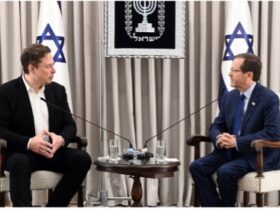

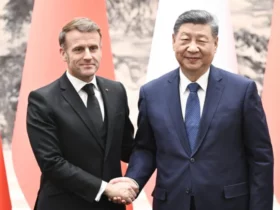





Leave a Reply